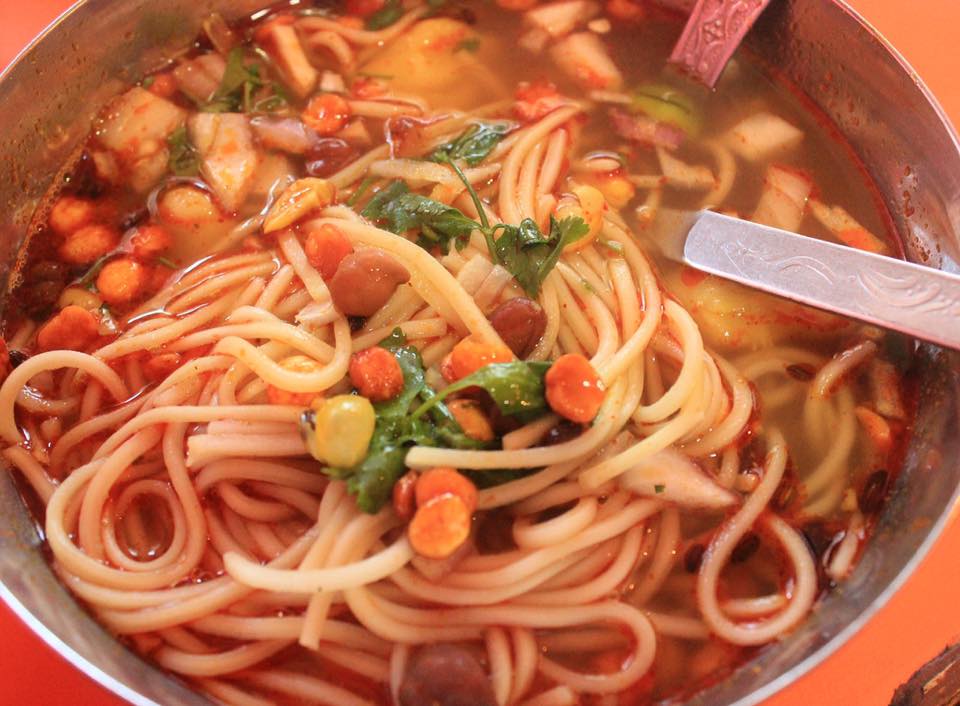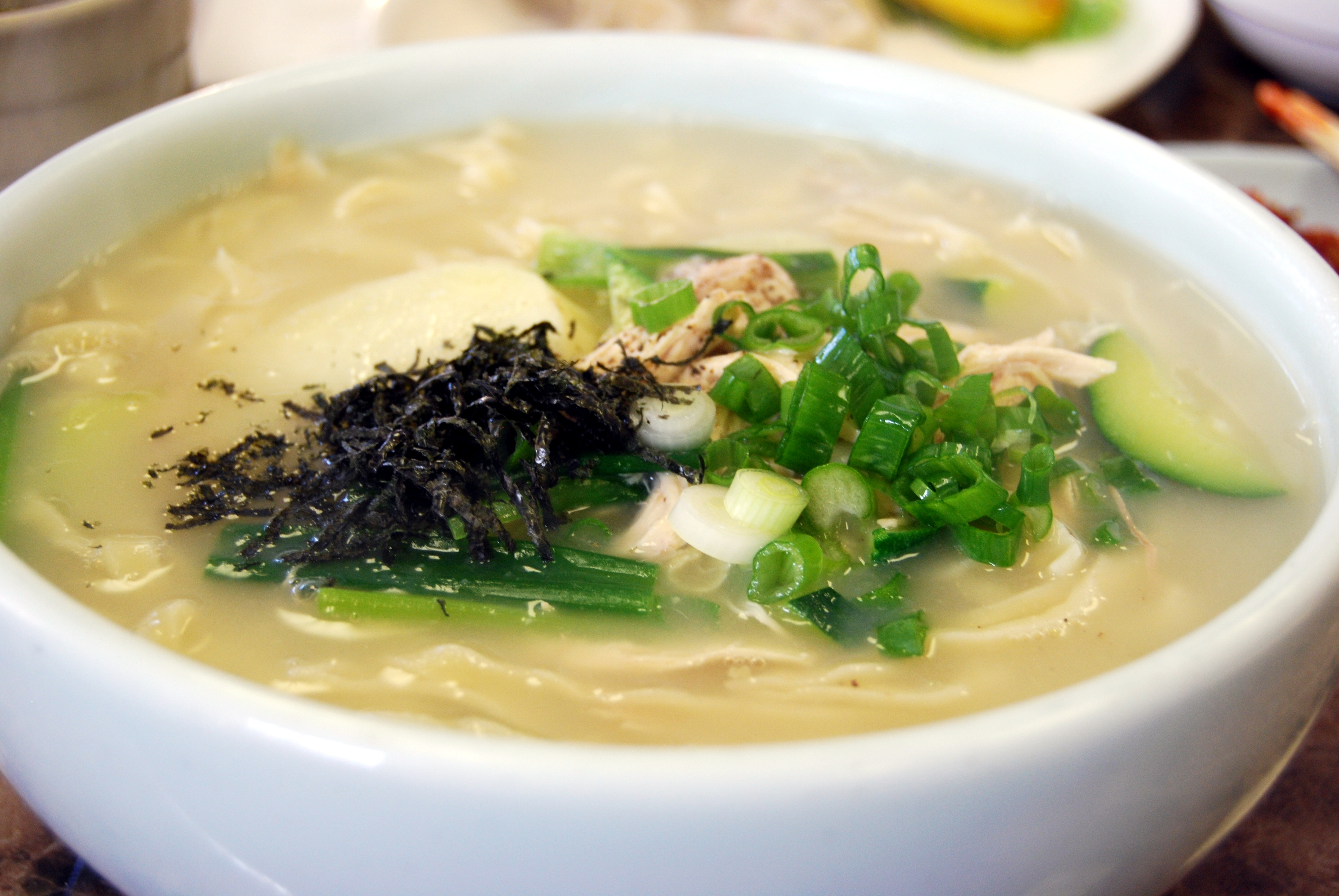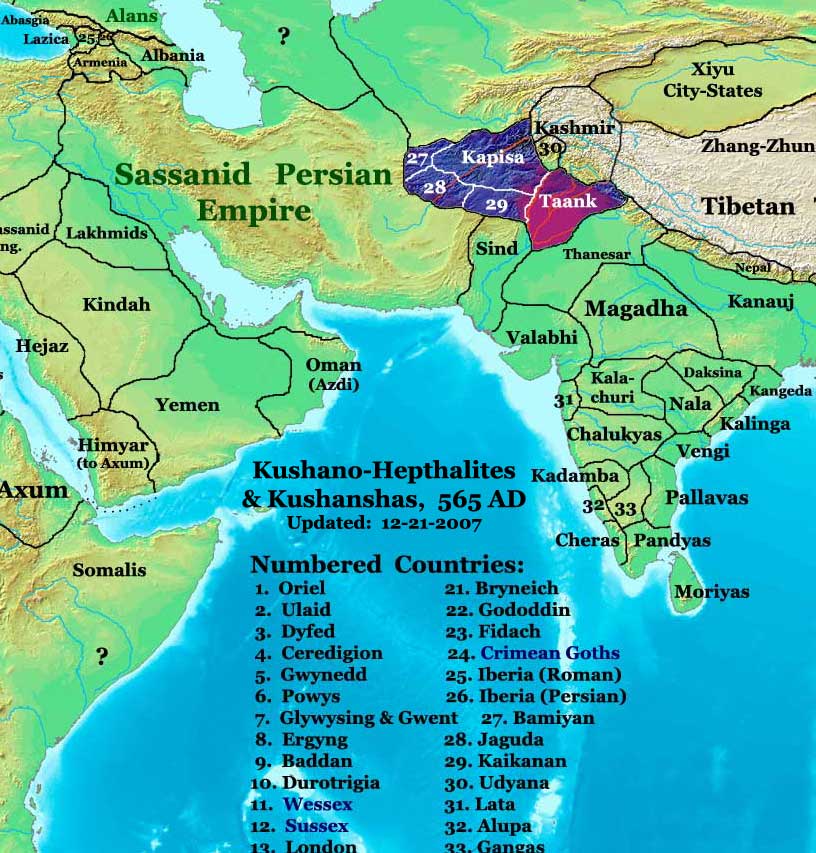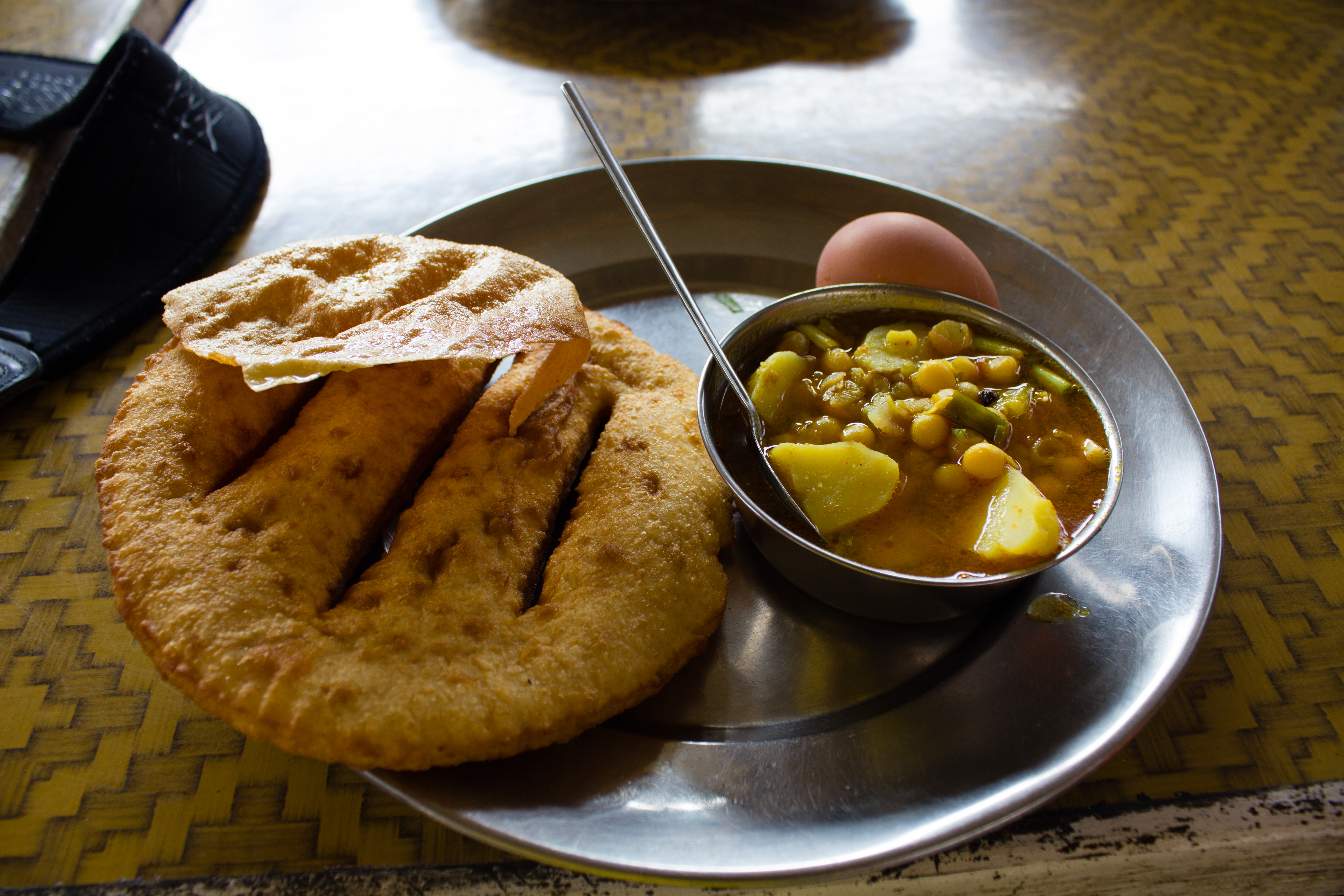|
Thukpa
Thukpa ( Tibetan: ཐུག་པ; IPA: /tʰu(k̚)ˀ˥˥.pə˥˥/ ) is a Tibetan noodle soup, which originated in the eastern part of Tibet. ''Amdo thukpa'', especially '' thenthuk'', is a variant among the Indians, especially Ladakhis and the Sikkimese. ''Thukpa'' can be prepared in both vegetarian and non-vegetarian variations; the most popular non-vegetarian variation includes chicken. Varieties of ''thukpa'' include: * '' Thenthuk'' (): Hand-pulled noodle * ''Gyathuk'' (): Chinese noodle * * '' Bhakthuk'' (): Hand-rolled pinched noodle (like gnocchi) * ''Tsapthuk'' (): chopped noodle Etymology Thukpa has been described as a "generic Tibetan word for any soup or stew combined with noodles". Regional traditions Indian thukra In India, the dish is consumed by people of Nepalese and Tibetan origin in the state of Sikkim, the district of Darjeeling and the union territory of Ladakh Ladakh () is a region administered by India as a union territory and constitutes an e ... [...More Info...] [...Related Items...] OR: [Wikipedia] [Google] [Baidu] |
List Of Tibetan Dishes
This is a list of Tibetan dishes and foods. Tibetan cuisine includes the culinary traditions and practices of Tibet and its peoples, many of whom reside in India and Nepal. It reflects the Tibetan landscape of mountains and plateaus. It is known for its use of noodles, goat, yak, mutton, dumplings, cheese (often from yak or goat milk), butter (also from animals adapted to the Tibetan climate) and soups. The cuisine of Tibet is quite distinct from that of its neighbors. Tibetan crops must be able grow at the high altitudes, although a few areas in Tibet are low enough to grow such crops as rice, oranges, bananas, and lemon. Since only a few crops grow at such high altitudes, many features of Tibetan cuisine are imported, such as tea, rice and others. The most important crop in Tibet is barley. Flour milled from roasted barley, called '' tsampa'', is the staple food of Tibet. It is eaten mostly mixed with the national beverage Butter tea. Meat dishes are likely to be yak, goat, ... [...More Info...] [...Related Items...] OR: [Wikipedia] [Google] [Baidu] |
Indian Cuisine
Indian cuisine consists of a variety of regional and traditional cuisines native to the Indian subcontinent. Given the diversity in soil, climate, culture, ethnic groups, and occupations, these cuisines vary substantially and use locally available spices, herbs, vegetables, and fruits. Indian food is also heavily influenced by religion, in particular Hinduism and Islam, cultural choices and traditions. Historical events such as invasions, trade relations, and colonialism have played a role in introducing certain foods to India. The Columbian exchange, Columbian discovery of the New World brought a number of new vegetables and fruits. A number of these such as potatoes, tomatoes, Chili pepper, chillies, peanuts, and guava have become staples in many regions of India. Indian cuisine has shaped the history of international relations; the spice trade between India and Europe was the primary catalyst for Europe's Age of Discovery. Spices were bought from India and traded around ... [...More Info...] [...Related Items...] OR: [Wikipedia] [Google] [Baidu] |
List Of Nepalese Dishes
Nepali cuisine, Nepali/Nepalese cuisine refers to the food eaten in Nepal. The country's Cultural diversity, cultural and Geography of Nepal, geographic diversity provides ample space for a variety of cuisines based on ethnicity and on soil and Climate of Nepal, climate. Nevertheless, ''Dal bhat, dal-bhat-tarkari'' () is eaten throughout the country. ''Dal'' is a soup made of lentils and spices. This is served over boiled grain, ''bhat''—usually rice with vegetable stew, ''tarkari''. Condiments are usually small amounts of extremely spicy chutney (चटनी) or South Asian pickle, pickle (''achaar'', अचार) which can be fresh or fermented. The variety of these is said to number in the thousands. Other accompaniments may be sliced lemon (''kagati'') with fresh green chili (''hariyo khursani''). Dhindo is a traditional food of Nepal. It also has a high influence of west and central Asian cuisine. Nepali/Nepalese dishes * Aato (made from crushed corn) * South Asia ... [...More Info...] [...Related Items...] OR: [Wikipedia] [Google] [Baidu] |
Thenthuk
Thenthuk () or hand-pulled noodle soup (thukpa), is a very common noodle soup in Tibetan cuisine, especially in Amdo, Tibet where it is served as dinner and sometimes lunch. The main ingredients are wheat flour dough, mixed vegetables and some pieces of mutton or yak meat. Vegetable thenthuk is a common modern-day option too. Preparation Making the soup consists of mixing the flour, kneading the dough, chopping the vegetables and meat and boiling the soup. The cook starts working with the dough when everything boiling in the soup is well cooked. They shape the dough, flatten it, pull it and cut it off, right into the boiling soup. As soon as this is finished, the noodle soup is ready to cool down and be served. Nepalese thukpa The Nepalese version of thukpa () contains chili powder, masalas, and noodles with gram and pea soup which gives it a hot and spicy flavor. The most typical Nepali thukpa is found in Sankhuwasabha district. However, the thukpa found in Kathmandu Valley ... [...More Info...] [...Related Items...] OR: [Wikipedia] [Google] [Baidu] |
Noodle Soup
Noodle soup refers to a variety of soups with noodles and other ingredients served in a light broth. Noodle soup is a common dish across East Asia, Southeast Asia and the Himalayan states of South Asia. Various types of noodles are used, such as rice noodles, wheat noodles and egg noodles. Varieties East Asia China There are myriad noodle soup dishes originating in China, and many of these are eaten in, or adapted in various Asian countries. * Ban mian (板麵) – Hakka-style, flat-shaped egg noodles in soup. * Chongqing noodles * Cold noodle (冷面/冷麵) – Shanghai-style, flat noodle stirred with peanut butter sauce, soy sauce and vinegar, served cold. * Crossing-the-bridge noodles () – ingredients are placed separately on the table, then added into a bowl of hot chicken stock to be cooked and served. The ingredients are uncooked rice noodles, meat, raw eggs, vegetables and edible flowers. The stock stays warm because of a layer of oil on top of the bowl. Typical cuisi ... [...More Info...] [...Related Items...] OR: [Wikipedia] [Google] [Baidu] |
Ladakh
Ladakh () is a region administered by India as a union territory and constitutes an eastern portion of the larger Kashmir region that has been the subject of a Kashmir#Kashmir dispute, dispute between India and Pakistan since 1947 and India and China since 1959.The application of the term "administered" to the various regions of Kashmir and a mention of the Kashmir dispute is supported by the WP:TERTIARY, tertiary sources (a) through (e), reflecting WP:DUE, due weight in the coverage. Although "controlled" and "held" are also applied neutrally to the names of the disputants or to the regions administered by them, as evidenced in sources (h) through (i) below, "held" is also considered politicised usage, as is the term "occupied", (see (j) below). (a) (subscription required) Quote: "Kashmir, region of the northwestern Indian subcontinent ... has been the subject of dispute between India and Pakistan since the partition of the Indian subcontinent in 1947. The northern and wester ... [...More Info...] [...Related Items...] OR: [Wikipedia] [Google] [Baidu] |
Tibetan Cuisine
Tibetan cuisine includes the culinary traditions and practices of the Tibetan people in the Tibet region. The cuisine reflects the Tibetan landscape of mountains and plateaus and includes influences from neighbors (including India and Nepal where many Tibetans abide). It is known for its use of noodles, goat, yak, mutton, dumplings, cheese (often from yak or goat milk), butter, yogurt (also from animals adapted to the Tibetan climate), and soups. Vegetarianism has been debated by religious practitioners since the 11th century but is not prevalent due to the difficulty of growing vegetables, and cultural traditions promoting consumption of meat. Crops must be able to grow at high altitudes, although a few areas are at low enough altitude to grow crops such as rice, oranges, bananas and lemons. The most important crop is barley. Flour milled from roasted barley, called '' tsampa'', is the staple food of Tibet, as well as '' Sha phaley'' (meat and cabbage in bread). '' Balep'' ... [...More Info...] [...Related Items...] OR: [Wikipedia] [Google] [Baidu] |
Nepalese Cuisine
Nepali cuisine comprises a variety of cuisines based upon ethnicity, alluvial soil and Geography of Nepal#Climate, climate relating to cultural diversity and Geography of Nepal, geography of Nepal and neighboring regions of Sikkim and Gorkhaland. ''Dal bhat, Dal-bhat-tarkari'' () is eaten throughout Nepal. ''Dal'' is a soup made of lentils and spices, ''bhat'' — usually rice but sometimes another grain — and a vegetable curry, ''tarkari''. Condiments are usually small amounts of spicy South Asian pickles, pickle (''achaar'', अचार) which can be fresh or fermented, mainly of dried mustard greens (called ''gundruk ko achar'') and radish (''mula ko achar'') and of which there are many varieties. Other accompaniments may be sliced lemon (''nibuwa'') or Kaffir lime, lime (''kagati'') with fresh green chilli () and a fried Papadam, and also Islamic food items such as rice pudding, sewai, and biryani. (ढिंडो) is a traditional food of Nepal. A typical example of ... [...More Info...] [...Related Items...] OR: [Wikipedia] [Google] [Baidu] |
Tibet
Tibet (; ''Böd''; ), or Greater Tibet, is a region in the western part of East Asia, covering much of the Tibetan Plateau and spanning about . It is the homeland of the Tibetan people. Also resident on the plateau are other ethnic groups such as Mongols, Monpa people, Monpa, Tamang people, Tamang, Qiang people, Qiang, Sherpa people, Sherpa, Lhoba people, Lhoba, and since the 20th century Han Chinese and Hui people, Hui. Tibet is the highest region on Earth, with an average elevation of . Located in the Himalayas, the highest elevation in Tibet is Mount Everest, Earth's highest mountain, rising above sea level. The Tibetan Empire emerged in the 7th century. At its height in the 9th century, the Tibetan Empire extended far beyond the Tibetan Plateau, from the Tarim Basin and Pamirs in the west, to Yunnan and Bengal in the southeast. It then divided into a variety of territories. The bulk of western and central Tibet (Ü-Tsang) was often at least nominally unified under a ser ... [...More Info...] [...Related Items...] OR: [Wikipedia] [Google] [Baidu] |







